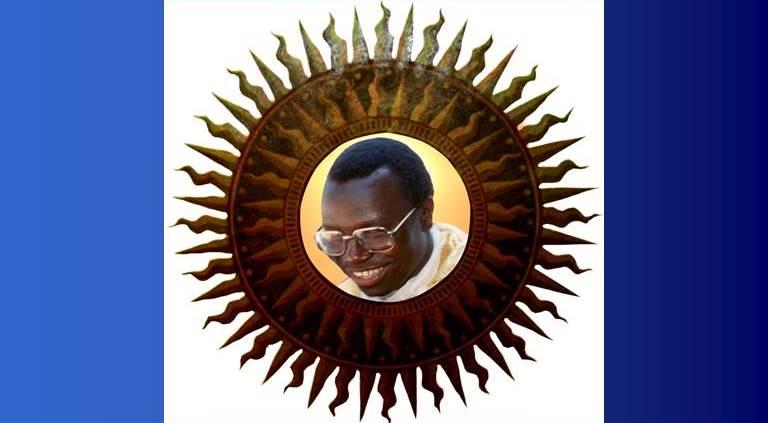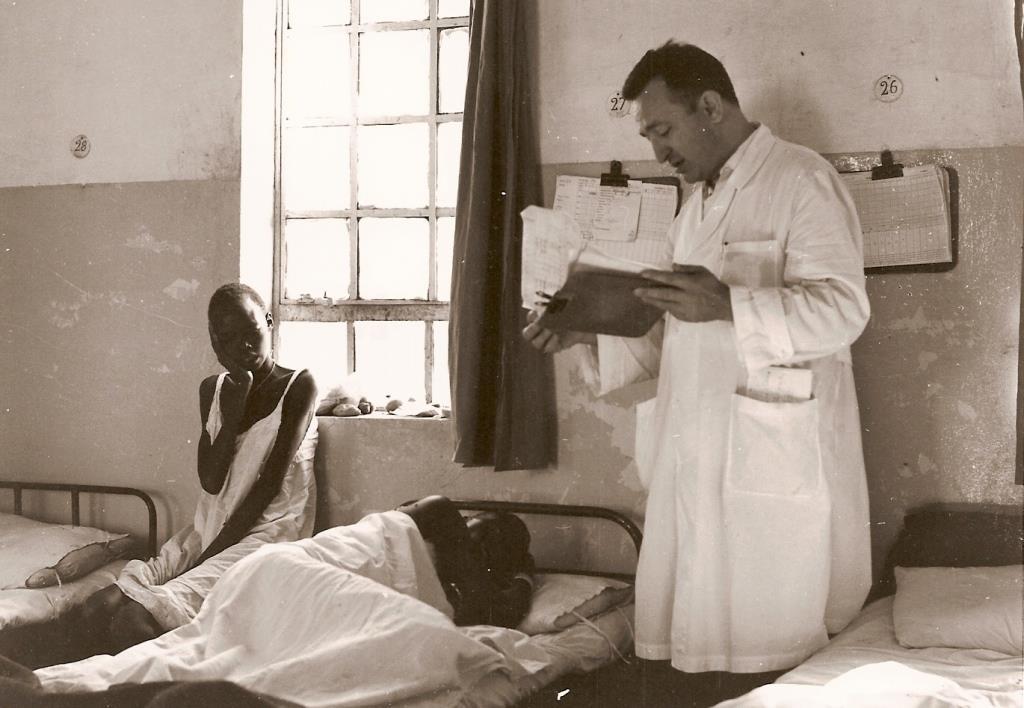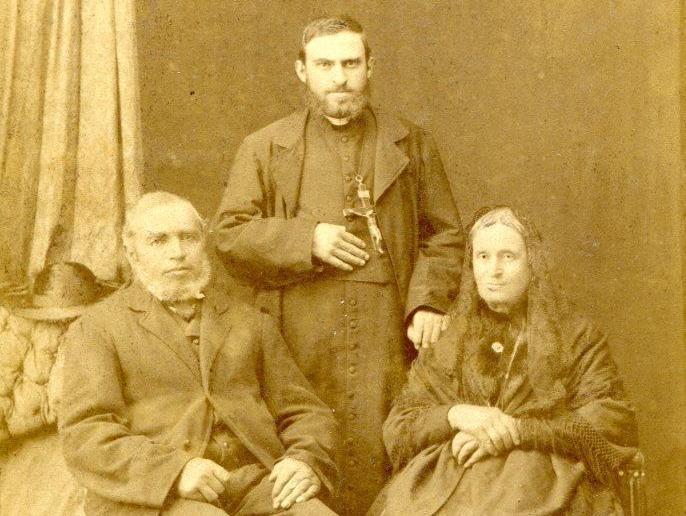Daniel Comboni
Comboni Missionaries
Institutional area
Other links
Newsletter
If Comboni had lived a few more months, he would have witnessed the tremendous trial to which his missionaries were subjected. The Mahdist Revolution reached its peak in 1882. In this rebellion, all the missions founded by Comboni were destroyed and the missionaries taken captive. Faithful to their promise and to their missionary vocation 'until death' as taught by their Founder.
Martyrdom implies and expresses a faithfulness that aims to complete the mission received, in the cause of God from whom we receive it and in the cause of brothers and sisters to whom God sends us.
 Under the Mahdia
Under the Mahdia
The events that took place from March 1882, when Mohammed Ahmed Ibn Abdullah proclaimed himself The Mahdi (Guide, Restorer of religion and of justice), mark a most difficult period in the history of the Church in Sudan and in the lives of the Comboni Missionaries, men and women. It was the start of revolution that lasted until 1898.
From the September of 1882 the whole area was unsafe, with tensions that made parts of it extremely dangerous. On 14 September the commander of the small centre of Mak Umar surrendered to the Mahdi, and the missionaries of Delen had to do the same. Three days later they set off on the long march to El-Obeid. During this journey, all their possessions were taken from them, they were ill-treated and subjected to fierce pressure to join Islam. Exhausted and drained, they arrived at the Mahdi's camp on 27th September. The pressure on them to become Moslems was unceasing: "Do you want to become Moslems?" "We would rather die!" The two months of physical and mental anguish, hunger and privations began to take their toll, and some of them did die: Sr.Eulalia Pesavento (27.10.1882), Bro. Mariani (31.10.1882), Sr. Amalia Andreis (7.11.1882).
Meanwhile, at El-Obeid, Fr. Losi was doing his best to move the mission personnel to safety. The attempt failed, and the group took refuge in the fort, along with the other inhabitants of El-Obeid. Here too the missionaries suffered privations and sickness. El-Obeid came under siege on 9 September 1882, and fell into the hands of the Mahdi. The members of the mission were taken captive: Sisters Teresa Grigolini, Concetta Corsi, Fortunata Quascé, Elisabetta Venturini and Caterina Chincarini, Fathers Giovanni Losi and Paolo Rosignoli and Brother Isidoro Locatelli. Finding themselves all together, the missionaries now began to discover more strength to support and console one another, though the conditions remained unchanged.
Ready to die
At first, the missionaries faced the situation with courage, all of them ready to die for the love of Christ. But the way of their Cross proved long and arduous, full of sufferings and humiliations. They were taken to the Mahdi's camp at Boga, and remained there for two years. During this period they were able to support one another against the constant pressure to get them to apostatise. And for a while they were sustained by a new hope that they might soon be rescued. But news of the failure of the Hicks expedition soon extinguished their expectations.
Things quickly came to a head. The Mahdi decided to march on Khartoum and take possession of the city. Mgr. Sogaro, informed of this, ordered the missionaries to flee towards Cairo. But they did not want to look only to their own safety. They had been sent to announce the Good News, so like good shepherds they gathered their flock together and set out on the journey Northwards. It was like the fulfilment of one of the principles received from their Founder: "Missionaries cannot go to Paradise alone... they have to go there in the company of the souls they have saved" (S 6655).
In the meantime, the prisoners tried to draw up a plan of escape from the Mahdi's camp. Teresa Grigolini wrote about that time: “…for several days I have been unable to sleep, either at night or during the day, I am so tense; we have all been so impatient...". But the plan failed, and what they had all feared from some time happened: they were separated from one another.
Crushed
Each one was consigned to a Moslem family as a slave. In this condition of total isolation they set out with the Mahdi for Rahad on 7 April 1884. All of them suffered long and bitter humiliations, anxiety, fear, the terrible journey on foot, ill-treatment and violence. Their resistance began to crumble as the physical and moral pressures built up, while their physical and psychological weakness increased. One by one they gave in and pronounced the 'Formula' of Islam. It was a bitter and humiliating experience. To pronounce the formula did not mean conversion to Islam, and indeed they continued to live as Catholics and practise what they could of their religion. But the appearances were a searing pain.
Humiliations did not end at Rahad. For some of them there was a long and slow martyrdom that went on for years. The Sisters were faced with another danger: they could be given to a madhist as a wife. As this threat increased, the missionaries sought a solution. Rudolf Slatin, former Governor of Darfur, suggested the celebration of show marriages with some Greeks who were also captives of the Mahdi. Despite the risks involved, the Greeks agreed to the plan.
Khartoum fell on 26 January 1885. This time Bishop Sogaro threw himself completely into the liberation of the prisoners, sending aid to the missionaries and helping them to escape. Not many would enjoy early freedom: first Fr. Bonomi and then, at the end of October 1885, Sisters Caprini and Fortunata Quascé.
Some of the men and women missionaries were kept prisoner in Omdurman, and here they tried to organise their lives, amidst privations, humiliations and sufferings of all kinds. They felt they had been abandoned, and their Faith and Hope were tested to the full.
Final events
On 8 December 1891 Fr. Ohrwalder, Sr. Caterina Chincarini and Sr. Elisabetta Venturini reach Egypt, physically exhausted, but finally free after 10 years of harsh imprisonment. Later on also Fr. Rossignoli is liberated.
With the battle of Kerri, the Mahdist revolution is destroyed. For the Sudan it is the beginning of a new period under the Anglo-Egyptian rule. After the fall of Omdurman also Teresa Grigolini and Br. Regnotto are freed.
According to times and situations, the cross and martyrdom take up different connotations of a higher or lower intensity. This particular cross has been erected in the life of many of our missionaries who have paid with their own life, to the point of martyrdom, their fidelity to the mission. We may mention, for instance, the four Comboni Missionaries killed in Congo in 1964, Fr. Ezekiel Ramin, Br. Alfred Fiorini, Fr. Raphael Di Bari, Sr. Liliana Rivetta, Sr. Teresa Dalle Pezze, to mention just a few out of many more. Following the example of those who had gone before them, they have become examples of a dynamic fidelity that enlightens our path and renews in us the conviction we have received from our Founder: “Our missions prosper through martyrdom”, because this is the mission’s normal background.




